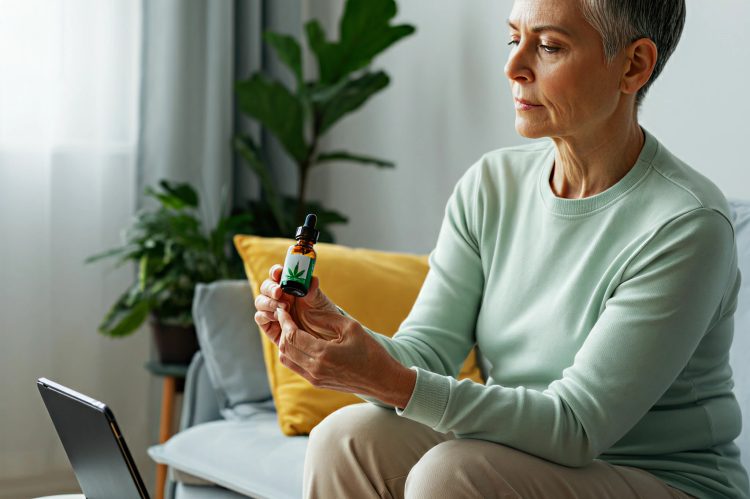The COVID-19 pandemic changed life in profound ways, especially for adults aged 45 and older. It reshaped how we connect with others, access healthcare, and care for our mental and physical well-being. Among these transformations, one notable trend emerged—the use of medicinal cannabis as a means of managing stress, anxiety, and chronic conditions.
This article explores how the pandemic forced shifts in social behaviors and healthcare access for adults 45+, including how medicinal cannabis played a growing role in their lives. By the end, you’ll understand how these changes intersected and what they mean for the future of wellness-focused living.
Social Isolation and Mental Health Dynamics
During the height of the pandemic, lockdowns and enforced social distancing created unprecedented social isolation. Adults 45 and older were particularly vulnerable, with reduced physical interaction and fears of COVID-19 making it harder to maintain essential social connections.
Age-Specific Vulnerabilities
Adults aged 45–64 faced unique pressures during the pandemic. Caregiving responsibilities, financial uncertainties, and occupational disruptions compounded stress. These challenges made this group more susceptible to feelings of loneliness and heightened emotional distress, even if they had solid social connections. For those aged 65+, restricted mobility and limited digital literacy often heightened isolation.
Research shows that loneliness was a greater predictor of depressive symptoms than disconnection itself, particularly for middle-aged adults. While routines may have stayed the same during lockdowns for socially isolated individuals, the lack of specific coping strategies exacerbated anxiety and depression for both socially engaged and less-engaged adults.
Mental Health and Coping Strategies
The pandemic encouraged the emergence of new coping practices, with many adults exploring therapeutic tools, including medicinal cannabis. For some, it opened up pathways to heal from the emotional toll of isolation while providing stress and pain relief that traditional methods couldn’t fully address.
Telehealth Adoption and Medicinal Cannabis Access
Accessing healthcare, including medicinal cannabis, transformed rapidly with the expansion of telehealth during the pandemic. This shift was crucial in ensuring that vulnerable populations, including older adults, could maintain their care regimens.
Policy Shifts That Changed the Game
By 2022, the number of Americans enrolled in medical cannabis programs grew by 33%, reaching 4.1 million people. Telehealth platforms like Leafwell allowed patients to obtain medical cannabis certifications remotely, eliminating the barriers of in-person visits. States that deemed cannabis businesses “essential” ensured that patients could access products via delivery or curbside pickup, minimizing interruptions in care.
Additionally, federal and state regulatory updates, such as the evolving telemedicine rules by the DEA, widened access by enabling remote prescriptions of cannabis-based medications in many states.
Barriers to Digital Access
Despite these positive developments, digital inequities hindered adoption for older adults. Research found that adults over 65 were 26–33% less likely to utilize telehealth services compared to younger cohorts. Financial constraints, distrust of technology, and lack of digital literacy exacerbated these disparities, particularly in rural areas. However, policies tailored to build trust and bridge these gaps could mitigate these challenges over time.
Medicinal Cannabis as a Coping Mechanism
Many adults aged 45+ turned to medicinal cannabis for its therapeutic benefits during the pandemic. What began as an alternative for managing stress and anxiety blossomed into a trusted method for treating conditions like chronic pain, arthritis, and insomnia.
Real-World Therapeutic Benefits
A 2025 study involving over 1,200 participants (average age 66.7) revealed significant improvements in pain management, sleep quality, and overall well-being after six months of medicinal cannabis use. Patients also reported a decreased reliance on opioids and antidepressants, offering a promising glimpse into cannabis as a harm-reduction tool.
Additionally, older adults adapted their consumption methods during the pandemic. Concerns about respiratory health led many to shift from inhalation to alternatives like edibles and tinctures, favoring products with fewer lung-related risks.
Meeting Stress-Driven Needs
Cannabis use rose subtly among adults 45+ during the pandemic. Studies attribute this increase to pandemic-related stress, boredom, and anxiety. At the same time, states that ensured sustained access to cannabis products saw higher consumption stability among users.
For this group, cannabis addressed a dual purpose: therapeutic relief and emotional regulation. While most adults over 45 focused on medicinal applications, younger generations leaned toward recreational use.
Mental Health and Cannabis Regulation
Cannabis and Emotional Resilience
While medicinal cannabis proved effective at easing stress, improving sleep, and supporting emotional regulation for many, some individuals experienced increased reliance, raising concerns about mental health risks with heavy use.
Behavioral interventions and educational opportunities are critical to ensure this demographic uses cannabis responsibly. Virtual support groups, community programs, and accessible long-term care policies can help mitigate risks of overuse.
Bridging the Digital Divide
Investments in telehealth infrastructure, broadband expansion, and user-friendly interfaces are essential to promote equitable access to medicinal cannabis. Policymakers must prioritize age-friendly digital tools and training programs to support older adults in accessing virtual healthcare platforms.
Creating Consistency in Regulation
State-by-state variations in cannabis legalization complicate access for older adults. Federal descheduling of cannabis, coupled with standardized patient resources and certification processes, would enhance equity while fostering research into its long-term benefits and risks.
The Path Forward for Adults 45+
The pandemic irrevocably reshaped the way adults 45+ experience social interaction, healthcare, and wellness. Medicinal cannabis emerged as a powerful tool for supporting physical and mental health during this time of change, but challenges remain in ensuring equitable access and safe usage.
To support this demographic moving forward:
- Expand Digital Education: Offer telehealth training programs specifically designed for older adults.
- Focus on Community Support: Develop programs targeting loneliness and caregiver stress, incorporating alternative wellness approaches like medicinal cannabis.
- Ensure Policy Uniformity: Work toward a consistent regulatory framework that removes barriers while advancing cannabis research.
By committing to these changes, medicinal cannabis can play a unique role in improving the quality of life for adults 45+. For those exploring options, our selected range of products and expert consultations can help you understand the benefits of tailored care.
Take the First Step
Whether you’re looking into pain relief, better sleep, or stress management, medicinal cannabis may hold the key to a healthier, more fulfilling life. Explore our resources or consult with one of our experts for personalized guidance. Your wellness matters.

